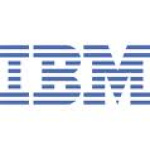- Industry: Computer
- Number of terms: 98482
- Number of blossaries: 0
- Company Profile:
Sometimes referred to as “Big Blue” IBM is a multinational corporation headquartered in Armonk, New York. It manufactures computer hardware and software and provides information technology and services.
(1) A memory area that is used by a program to hold information.<br />(2) A system object used to communicate data, such as CL variable values between the programs within a job and between jobs. The system-recognized identifier for the data area is *DTAARA.<br />(3) An area of a predefined length and format on a panel in which data can be entered or displayed. A field can consist of one or more data areas.
Industry:Software
(1) A characteristic of an object that describes the object. A property can be changed or modified. Properties can describe an object's name, type, value, or behavior, among other things.<br />(2) A characteristic or attribute that describes a unit of information.<br />(3) Any configurable information about a WebSphere business integration component. A component typically has properties that are common to all components of that type (for example, standard connector properties) as well as properties that are specific to that component (for example, connector-specific properties). See also business object property, collaboration property, standard property.<br />(4) In the Common Information Model (CIM), an attribute that is used to characterize instances of a class.
Industry:Software
(1) A characteristic or trait of an entity that describes the entity; for example, the telephone number of an employee is one of that employee's attributes.<br />(2) In user interface manager (UIM) tag language, an identifier used with related material that takes on a specific meaning, such as an action to be taken or the characteristics of text or data.<br />(3) In object oriented programming, a property of an object or class that can be distinguished distinctly from any other properties. Attributes often describe state information.<br />(4) A property, quality, or characteristic whose value contributes to the specification of an element or program function. For example, "cost" or "location" are attributes that can be assigned to a resource. See also array attribute, simple attribute, single-cardinality attribute.<br />(5) Data associated with a component. For example, a server component might have attributes such as host name, IP address, operating system type, operating system version, number of CPUs, CPU speed, type of RAM, number of hard drives, network domain, and so on.<br />(6) Descriptive information that provides important details about a requirement or discussion.<br />(7) The information, data, or properties that belong to instances of a classifier.<br />(8) In markup languages such as SGML, XML, and HTML, a name-value pair within a tagged element that modifies features of the element.<br />(9) A system or application element being monitored by a monitoring agent, such as Disk Name and Disk Read/Writes Per Second.
Industry:Software
(1) A method of operation in which the actions that are available to a user are determined by the state or setting of the system, program, or device.<br />(2) In data communications, the set of rules and protocols to be used for a session.<br />(3) The processing state of an activity. An activity can be in an initial, active, dormant (that is, waiting for an event), cancelling, or complete mode.<br />(4) A collection of attributes that specifies a file's type and its access permissions.
Industry:Software
(1) A circuit that increases the signal current for sending data over long cables or to many other circuits.<br />(2) A circuit that sends small electronic signals to a device.
Industry:Software
(1) A circular path on the surface of a disk or diskette on which information is magnetically recorded and from which recorded information is read.<br />(2) A unit of storage on a count-key-data (CKD) device that can be formatted to contain a number of data records. See also data record, track-descriptor record, home address.
Industry:Software
(1) A method valid for an object instance. An instance method that an object responds to is defined by the object's class or is inherited from an ancestor class. See also class method.<br />(2) In object-oriented programming, any method that is started with respect to an instance of a class.
Industry:Software
(1) A mode in which a program provides detailed output about its activities to aid a user in detecting and correcting errors in the program itself or in the configuration of the program or system.<br />(2) An environment in which programs can be tested.<br />(3) In DFSMShsm, the method of operation that projects the changes that would occur in normal operation but in which no user data is moved.
Industry:Software
(1) A class or construct that is used to step through a collection of objects one at a time.<br />(2) In a collaboration template's activity diagram, a specialized form of subdiagram that is analogous to a "for" loop and that allows a collaboration to perform an operation on all the attributes of a business object or on all the elements of a business object array. Also, the activity diagram symbol that embeds a reference to a nested diagram that implements such a looping operation, and the diagram that contains the looping behavior.<br />(3) In SQLJ, an object that contains the result set of a query. An iterator is equivalent to a cursor in other host languages.
Industry:Software
(1) A coded representation in which each bit, or group of bits, represents or corresponds to an item; for example, a configuration of bits in main storage in which each bit indicates whether a peripheral device or a storage block is available or in which each group of bits corresponds to one pixel of a display image.<br />(2) A pixmap with a depth of one bit plane.<br />(3) A representation of an image by an array of bits.
Industry:Software
